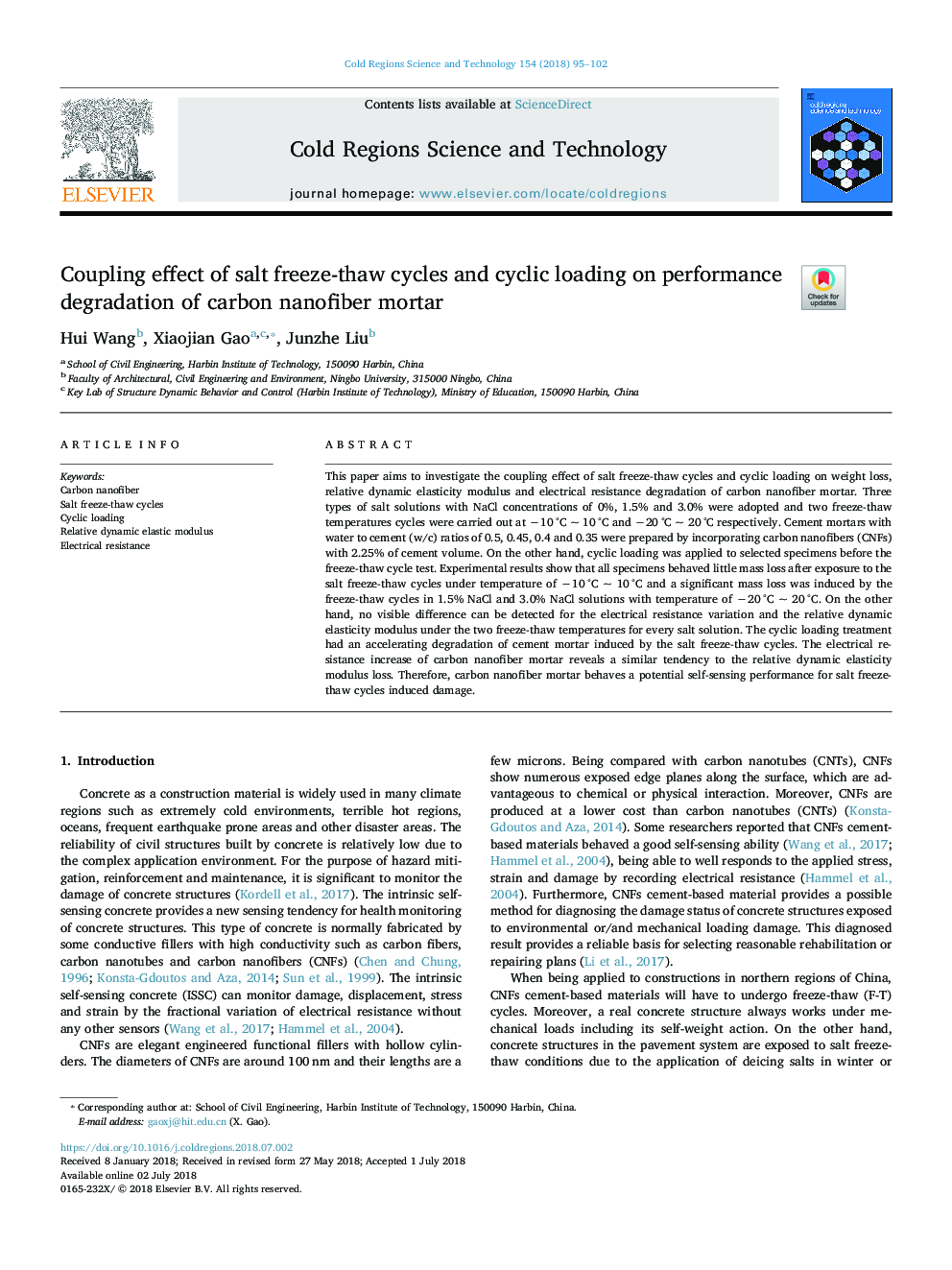| Article ID | Journal | Published Year | Pages | File Type |
|---|---|---|---|---|
| 8906381 | Cold Regions Science and Technology | 2018 | 8 Pages |
Abstract
This paper aims to investigate the coupling effect of salt freeze-thaw cycles and cyclic loading on weight loss, relative dynamic elasticity modulus and electrical resistance degradation of carbon nanofiber mortar. Three types of salt solutions with NaCl concentrations of 0%, 1.5% and 3.0% were adopted and two freeze-thaw temperatures cycles were carried out at â10â¯Â°C ~ 10â¯Â°C and â20â¯Â°C ~ 20â¯Â°C respectively. Cement mortars with water to cement (w/c) ratios of 0.5, 0.45, 0.4 and 0.35 were prepared by incorporating carbon nanofibers (CNFs) with 2.25% of cement volume. On the other hand, cyclic loading was applied to selected specimens before the freeze-thaw cycle test. Experimental results show that all specimens behaved little mass loss after exposure to the salt freeze-thaw cycles under temperature of â10â¯Â°C ~ 10â¯Â°C and a significant mass loss was induced by the freeze-thaw cycles in 1.5% NaCl and 3.0% NaCl solutions with temperature of â20â¯Â°C ~ 20â¯Â°C. On the other hand, no visible difference can be detected for the electrical resistance variation and the relative dynamic elasticity modulus under the two freeze-thaw temperatures for every salt solution. The cyclic loading treatment had an accelerating degradation of cement mortar induced by the salt freeze-thaw cycles. The electrical resistance increase of carbon nanofiber mortar reveals a similar tendency to the relative dynamic elasticity modulus loss. Therefore, carbon nanofiber mortar behaves a potential self-sensing performance for salt freeze-thaw cycles induced damage.
Related Topics
Physical Sciences and Engineering
Earth and Planetary Sciences
Earth and Planetary Sciences (General)
Authors
Hui Wang, Xiaojian Gao, Junzhe Liu,
